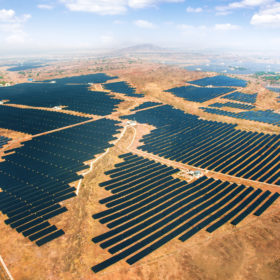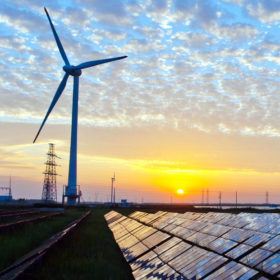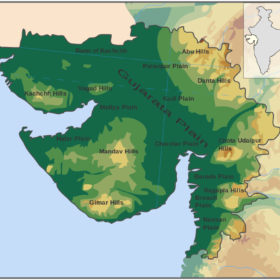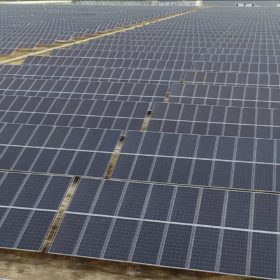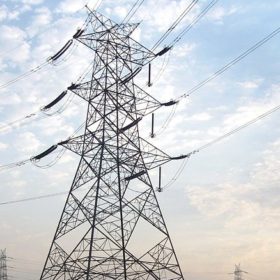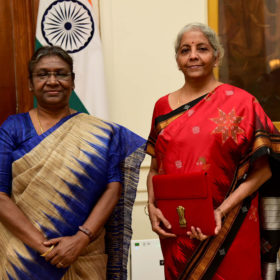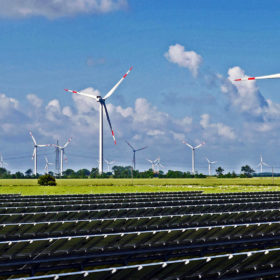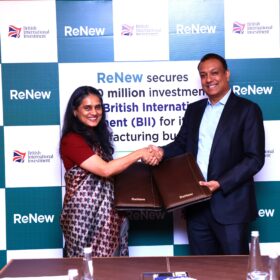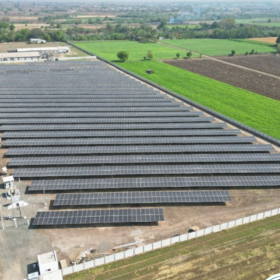NTPC tenders land and transmission system package for 2 GW of ISTS solar projects
NTPC Renewable Energy Ltd (NTPC REL) has tendered the land and extra-high-voltage (EHV) transmission system package for up to 2 GW of solar PV projects in Rajasthan, connected to the inter-state transmission system.
Sterlite Power wins green energy transmission project in Rajasthan
The project will act as one of the critical links in the evacuation of 20 GW of renewable power from the Renewable Energy Zones of Rajasthan to the national grid.
PTC India partners Belgium’s N-Side on predictive solution for power market
PTC India Ltd will work with N-Side, Belgium, to develop a predictive solution for the Indian power markets.
Sterlite Power commissions its largest green energy corridor project in Gujarat
The Lakadia-Vadodara transmission project will deliver more than 5 GW of power from the wind and solar energy zones of Bhuj and Kutch in Gujarat to the rest of India.
India installed 15 GW of solar in 2022, says Bridge To India
Adani (1,755 MW), NTPC (1,618 MW), and Avaada (1,383 MW) were the top developers by projects commissioned in 2022, according to Bridge To India’s latest report.
Tata Power to deploy AI-enabled smart energy management program in Mumbai
Tata Power will deploy US-based AutoGrid’s software application for electricity load management in Mumbai. It aims to engage 55,000 residential consumers and 6,000 large C&I customers to achieve 75 MW of peak capacity reduction within the first six months. It also plans to scale up the capacity reduction to 200 MW by the summer of 2025.
Budget 2023-24 reaffirms government’s focus on domestic solar and battery manufacturing, green hydrogen
The budget signifies the government’s intent to drive domestic manufacturing of lithium battery cells as it waives customs duty on the import of machinery required for manufacturing these cells. It also continues with nil customs duty on critical inputs for solar manufacturing. The budget also aims to support large-scale battery storage projects through viability gap funding.
Abu Dhabi’s International Holding Company to invest $400 million in Adani Enterprises FPO
Abu Dhabi-based International Holding Company (IHC) has subscribed to 16% of Adani Enterprises $2.5 billion Further Public Offering. This is IHC’s second investment deal completed with Adani Group after last year’s $2 billion investment in Adani Green Energy, Adani Transmission, and Adani Enterprises.
Union Budget 2023: Mainstreaming flexible and resilient grids
While the current policy regime supports the adoption of flexible resources like batteries, grid flexibility and resilience require more focus and a range of calibrated efforts, including due acknowledgment as a sector priority and robust planning at the central and state level. The upcoming union budget provides an opportunity for the government to develop flexible and resilient grids.
India misses 2022 renewables target of 175 GW by 30%
India has installed a cumulative renewables capacity (excluding large hydro) of 122 GW as of December 31, 2022, falling 30% short of its 175 GW target. While solar addition has remained more consistent than wind over the last few years, 2023 is going to be a challenging year for PV installation due to the shortage of domestically manufactured modules.

